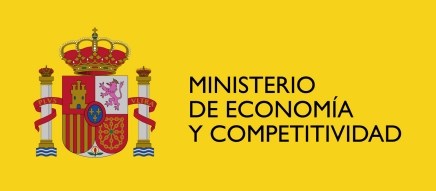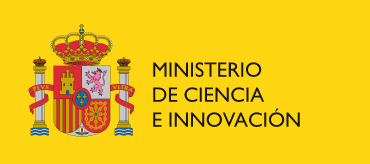Madrid Info
A little bit of History...
The grand metropolis of Madrid can trace its origins back to the times of Arab Emir Mohamed I (852-886), who ordered the construction of a fortress on the left bank of the Manzanares river. Later, it became the subject of a dispute between the Christians and Arabs until it was conquered by Alonso VI, in the 11th century. During the 18th century, under the reign of Carlos III, the great arteries of the city were designed, such as the Paseo del Prado. Today, the legacy of the distant past can mainly be seen in the Baroque and neoclassical structures of the 17th and 18th centuries, such as the Plaza Mayor (Main Square) and the Palacio Real (Royal Palace).
What to do in Madrid...
There is plenty to do in Madrid to suit all tastes, whether you prefer culture, arts, music, sports or just a lazy day, wandering through the city and soaking up the atmosphere! Here are a few highlights, but the list is by no means exhaustive.
Sights
El Parque del Buen Retiro
 A 350 acre park in Madrid's city center. The park was originally the site of the Royal Palace, built in 1632 under the reign of King Philip IV. It was opened to the public in 1868.
A 350 acre park in Madrid's city center. The park was originally the site of the Royal Palace, built in 1632 under the reign of King Philip IV. It was opened to the public in 1868.
Some of the park's main attractions are the Estanque del Retiro (Retiro Lake), with its monument to King Alfonso XII (pictured left). Around the lake there are regular puppet shows, African drummers and all manner of street performers and fortune tellers. Row boats can be rented to paddle around the Estanque.
The park also contains the Palacio de Cristal, a glass pavilion, inspired by The Crystal Palace in London. Another highlight is the Fountain of the Fallen Angel, which is a rare example of a statue of Lucifer.
The Forest of the Departed was recently created within the park to commemorate the 191 victims of the 11 March 2004 Madrid attacks.
Plaza de Cibeles & Paseo del Prado
The fountain of Cibeles depicts the goddess, Cibeles, sitting on a chariot pulled by two lions. On one side of

the fountain of Cibeles, the Paseo de Recoletos starts, heading North to join up with the Paseo de la Castellana. On the other side, the Paseo del Prado begins and heads off South, towards the fountain of Neptune, in the Plaza de Canovas del Castillo, and on until Atocha.
Up until the 19th century both the fountain of Neptune and Cibeles looked directly at each other, until the city council decided to turn them round to face towards the centre of the city.On the corners of the Plaza de Cibeles 'square' you will find the headquarters of the Spanish Postal Service, housed in a stunning building, which some people compare to a wedding cake. On another corner you will find the equally impressive headquaters of the National Bank of Spain and, opposite it, the Ministry of the Spanish Armed Forces.
El Palacio Real

The site of the palace dates from a 10th century fortress, constructed as an outpost by Mohammed I, Emir of Cordoba.
When, in the 1734, The Antiguo Alcazar ("Old Castle") burned down, King Philip V ordered a new palace to be built on t he same location. Construction spanned the years 1738 to 1755 and followed a Berniniesque design.
he same location. Construction spanned the years 1738 to 1755 and followed a Berniniesque design.
The vast palace is richly decorated by artists, such as Velazquez, Tiepolo, Mengs, Gasparini, Juan de Flandes, Caravaggio, and Goya. Several royal collections of great historical importance are kept at the palace, including the Royal Armoury and weapons dating back to the 13th century, and the world's only complete Stradivarius string quintet.
Bernabeu Stadium

The Santiago Bernabeu Football Stadium is home to the Real Madrid team. Its capacity is 80,400. The Bernabeu is one of the world's most famous football venues. It has the proud record of having hosted the European Cup final (1957, 1969 and 1980), the 1964 European Championship final (1964), and the FIFA World Cup final (1982). Its location, in the heart of Madrid's business district, is quite unusual for a football stadium. Visitors to the stadium can take a tour including the grounds, players' changing rooms, the press release rooms and learn about its history - the highs and the lows of Spanish football!

The Almudena Cathedral
Francisco de Cubas, the Marquis of Cubas, was the architect of this Gothic revival style Cathedral. Construction began in 1879 but ceased completely during the Spanish Civil War. The project was abandoned until 1950, when Fernando Chueca Goitia adapted the plans of de Cubas to a neoclassical style exterior to match the grey and white facade of the Palacio Real (Royal Palace), which stands directly opposite. It was not completed until 1993, when the cathedral was consecrated by Pope John Paul II.
On May 22, 2004, the marriage of Felipe, Prince of Asturias to Letizia Ortiz Rocasolano (who was thereafter known as Letizia, Princess of Asturias) took place at the cathedral.
The Neo-Gothic interior is uniquely modern, with chapels and statues of contemporary artists, in heretogeneous styles, from historical revivals to "pop-art" decor. The Neo-Romanesque crypt houses a 16th century image of the Virgen de la Almudena.
Museums
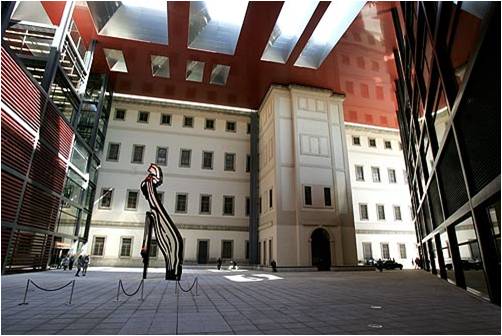 Reina Sofia
Reina Sofia
The creation of the Museo Nacional Centro de Arte Reina Sofia (Reina Sofía Modern Art Museum), met the need for a museum reflecting contemporary Spanish art in an international context. The Museo Reina Sofia's Collections contains works produced between the end of the 19th century up to the present. Today, the art gallery has approximately 16,200 works of art in every medium: approximately 4,000 paintings, more than 1,400 sculptures, nearly 3,000 drawings, more than 5,000 prints, more than 2,600 photographs, approximately 80 videos, about 30 art installations, a number of video installations, more than 100 decorative art pieces and 30 pieces of architecture.
El Prado
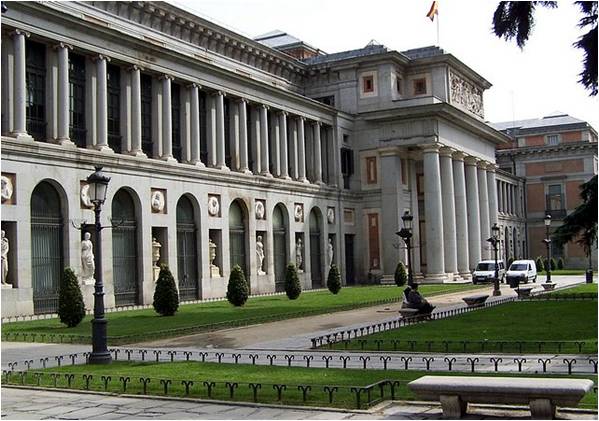 The Museo Nacional del Prado (Prado Museum) was created with the double aim of showing the works of art that belonged to the Spanish Crown and to demonstrate to the rest of Europe that Spanish art was of equal merit to that of any other national school.
The Museo Nacional del Prado (Prado Museum) was created with the double aim of showing the works of art that belonged to the Spanish Crown and to demonstrate to the rest of Europe that Spanish art was of equal merit to that of any other national school.
The exceptionally important royal collection forms the nucleus of the present-day Museo del Prado, and has been enriched by some of the masterpieces now displayed in the Prado. These include "The Descent" from the Cross by Rogier van der Weyden, "The Garden of Earthly Delights" by Hieronymous Bosch, "Knight with his Hand on his Breast" by El Greco, "The Death of the Virgin" by Mantegna, "The Holy Family" (known as 'La Perla') by Raphael, "Charles V at Mühberg" by Titian, "Christ washing the Disciples' Feet" by Tintoretto, Dürer's Self-portrait, "Las Meninas" by Velazquez, "The Three Graces" by Rubens and "The Family of Charles IV" by Goya.
The collection currently comprises around 7,600 paintings, 1,000 sculptures, 2,400 prints and 6,300 drawings, in addition to a large number of works of art and historic documents.
Thyssen Bornemisza
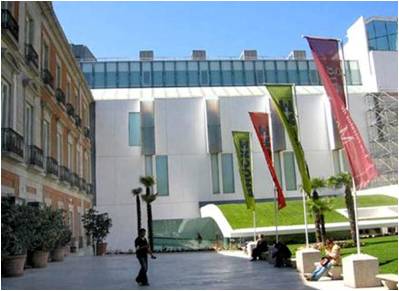 Movements and moments from the history of painting, mainly related to modern art -19th and 20th century works, with special emphasis on Impressionism, Post-Impressionism, German Expressionism, the early Avant-garde movements as well as the 19th century North American School, practically non-existent in European museums, and complemented by representations of other periods, such as the German School and Dutch painting from the 17th century.
Movements and moments from the history of painting, mainly related to modern art -19th and 20th century works, with special emphasis on Impressionism, Post-Impressionism, German Expressionism, the early Avant-garde movements as well as the 19th century North American School, practically non-existent in European museums, and complemented by representations of other periods, such as the German School and Dutch painting from the 17th century.
This museum completes the so-called "Art Triangle" or "Walk", in conjunction with the Prado Museum and the Reina Sofía Modern Art Museum.
Entertainment & Culture
Nightlife
Madrid is one of the world's liveliest cities. At weekends, during public holidays and especially in the run-up to Christmas, it really does seem to be the city that never sleeps. It is not unusual to see more people out and about at 5 and 6 in the morning in Madrid than you would see in many other European cities during the day!
Madrid's social scene has something for everybody. It caters for all tastes, ages and cultures. It also has the particular advantage of being a very child-friendly city, and there is no problem taking children to all types of bars, cafeterias and restaurants.
- Calle Huertas and the Plaza Santa Ana, both in the city centre, are some of the most popular areas for bar-hopping.
- The glitziest discos can be found in the triangle between Sol, Callao and Gran Via.
- Lavapies tends to attract a very bohemian crowd.
- Chueca is the centre of Madrid's gay scene, but is also gaining a reputation as one of the most fashionable areas to see and be seen.
Madrid Nightlife Tours arrange nighttime coach tours around Madrid and cater for all ages. You can see the city from the safety and comfort of your seat and, of course, enter your destination with no queuing or fuss!
Whatever you do, Que lo pases bien! (Have a good time!).
Flamenco
A trip to Madrid wouldn't be complete without experiencing flamenco. Flamenco can be seen in many bars and taverns in Madrid. Alma 100 is a very useful magazine with lots of information on current flamenco (free, with some articles in English and Japanese). Hundreds of dance academies, such as the famous Amor de Dios academy in Fray Luis de Leon street, are to be found all over the capital.
You can book a flamenco show and dinner through Go Madrid.
Or, just visit any of the following bars, taverns and restaurants and ask if there will be any flamenco artists playing:
- El Corral de la Moreria, Calle Moreria, 17
- Casa Patas, Calle Cañizares, 10
- Viña P Restaurante, Plaza de Santa Ana
- La Torre del Oro, Calle Tutor, 38
- Casa Manolo, Calle de Jovellanos
- El Abuelo, Calle Paz
- Peña Chaquetón, Calle de Canarias, 33
- El Mago, Calle de Velarde
- El Candela, Calle del Olmo, 8
- Suristán, Calle de la Cruz, 7
- Cardamomo, Calle de Echegaray, 15
- Los Gabrieles, Calle de Echegaray, 17
- El Burladero, Calle de Echegaray, 19
- La Soleá, Cava Baja, 34
Theatre/Cinema/Concerts
The area around Callao is full of theatres, cinemas and concert halls. However, it is worth checking when you arrive what else is happening around the city.
If you want up to date information and tickets to theatre, cinema, concerts or musicals these two websites are amongst the most useful (in Spanish only).
Most hotels will also offer you, as part of their services, information, reservations and bookings for shows and events all over Madrid.
Shopping
If you enjoy shopping, this is a sneak peak at what Madrid has to offer:
The Moda Shopping Centre is close to Madrid's football mecca, Santiago Bernabeu, and has a great variety of shops - from designer boutiques to jewelry and antiques shops. There is an impressive view of the stunning Torre Picassofrom inside the center.
The ABC Centre occupies the old head offices of the famous ABC newspaper. It is accesible from the streets Paseo de la Castellana or Calle Serrano. It has a wide selection of shops, with everything from clothing and jewelry to nick-nacks. During the summer its terrace offers fantastic views across the city. It is a favourite amongst children thanks to the Imaginarium children's store, which has a special 'little' door for them to enter through!
Jardin de Serrano, in the nearby street Calle Goya there is a lovely selection of good quality shops and clothes boutiques - women's clothes, jewellery, picture framing shops, handbags, children's clothes and much more.
Calle Serrano is a window shopper's heaven, located in one of Madrid's most affluent neighbourhoods, el Barrio de Salamanca. It is in this street that you will find all the top designers, expensive jewelry shops and some of Madrid's most luxurious buildings. The main shopping area begins at the Puerta de Alcala and runs for around 8-10 blocks. However, there is much more to be seen on Calle Serrano. Further up the street you will pass the Archaelogical Museum (website in Spanish only), Spain's stunning National Library (website in Spanish only) and the beautifulPlaza de Colon.
Another good area, but with a completely different character is Sol, right in the city center, where you will find all the top high street names amidst the hustle and bustle of Madrid.
Excursions
Segovia
This ancient city is spectacularly situated along a narrow mountain ridge. It is home to a wealth of treasures and the old city has been declared a UNESCO World Heritage Site.
 The aqueduct, widely recognized as Segovia's most famous landmark, was built during the end of 1st and the early 2nd centuries BC by the Romans. Its purpose was to bring water from the Rio Frio (Cold River) to the city, requiring an elevated section in its last 1 kilometer from the Sierra de Guadarrama to the walls of the old town.
The aqueduct, widely recognized as Segovia's most famous landmark, was built during the end of 1st and the early 2nd centuries BC by the Romans. Its purpose was to bring water from the Rio Frio (Cold River) to the city, requiring an elevated section in its last 1 kilometer from the Sierra de Guadarrama to the walls of the old town.
The Alcazar, or Castle-Palace, which dates back to the 11th century, is perched on the tip of the promontory and towers over the countryside below. During the Middle Ages, the Alcazar of Segovia was the favourite residence of the Kings of Castile, and almost every king added new parts to the building, transforming the original fortress into a courtier residence. A fire in 1862 destroyed part of the roofs, but they were restored in the very same style as more than 300 years previously.
The Cathedral of Segovia stands in the city's central square. Constructed by architect Juan Gil de Hontanon in the late Gothic style between 1522 and 1577, it is widely considered Europe's last great Gothic cathedral.
The church of Vera Cruz, beyond the Alcazar and the city walls, was founded by the Knights Templar. It is built in the circular style, a common design of the Templars, in recognition of the Temple Mount in Jerusalem. It is currently owned and maintained by the Knights of Malta.
Toledo

Toledo is located 70 km south of Madrid. It was declared a World Heritage Site by UNESCO in 1986 for its extensive cultural and monumental heritage. It was once the capital of the Spanish Empire and is famed as a place of coexistence of Christian, Jewish and Moorish cultures.
The old city is located on a mountaintop, surrounded on three sides by a bend in the Tagus River, and contains many historical sites, including theAlcazar (castle-palace), the Cathedral (the primate church of Spain), and theZocodover, a central market place.
Toledo's Alcazar was, in the 19th and 20th centuries, a renowned military academy. At the outbreak of the Spanish Civil War in 1936 its garrison was famously besieged by Republican forces.
The Cathedral of Toledo was built between 1226-1493 and modeled after the Bourges Cathedral, though it also combines some characteristics of the Mudejar style. It is remarkable for its incorporation of light and features the Baroque altar, El Transparente, which is several stories high, with fantastic figures of stucco, paintings, bronze castings, and multiple colors of marble - a masterpiece of medieval mixed media by Narciso Tome topped by a shaft of light, which shines for just a few minutes a day and which gives the cathedral its name.
Additionally, the city was renowned throughout the Middle Ages as an important center for the production of swords and other bladed instruments, a reputation which it still holds today.
Aranjuez
 Aranjuez lies 48 km south of the city of Madrid. It is located at the confluence of the Tagus and Jarama rivers.
Aranjuez lies 48 km south of the city of Madrid. It is located at the confluence of the Tagus and Jarama rivers.
Aranjuez is known for the Palacio Real de Aranjuez, a residence of the King of Spain. It was commissioned by Philip II and designed by Juan Bautista de Toledo and Juan de Herrera, who also designed El Escorial. A smaller palace, the Casa del Labrador, also stands on the grounds.
Its huge gardens are the most important in Spain from the Habsburg period. Of particular interest is the Jardin de la Isla, a man-made island bounded by the River Tagus and the River Canal.
The palace also houses a museum with important art and historical collections, including the Museo de la Vida en Palacio, which describes the daily lives of Spain's monarchs, and the Museo de las Faluas Reales, which houses the greatest collection of Spain's royal pleasure barges.
The strawberries of Aranjuez are also famous throughout Spain for their unique quality. In the summer The Strawberry Train is a popular day trip from Madrid to Aranjuez. On board the traditional steam train, passangers are served strawberries by stewardesses dress in period costumes.
Internationally, Aranjuez has become known for the Concierto de Aranjuez, composed by Joaquin Rodrigo. Upon his death he was buried in the town's cemetery.
Alcala de Henares
Alcala de Henares, is one of UNESCO's World Heritage Sites, and one of the first bishoprics to be founded in Spain. Located 35 km northeast of the city of Madrid, at a height of 2000 feet above sea level, it is the second largest city in the region of Madrid, after the Spanish capital itself.
 The center of the city is medieval, with many twisting cobbled streets, and a lot of historic buildings.
The center of the city is medieval, with many twisting cobbled streets, and a lot of historic buildings.
The major landmark and greatest pride of the city, its university, spreads throughout the city, but principally exists in two campuses in the North and centre of the city. The architectural influence of the university can be found in other present-day academic institutions. The University of San Diego is largely based on the Spanish University for instance.
The university chapel dedicated to Saint Ildefonso has a monument to Cardinal Cisneros by Fancelli, an Italian sculptor.
The author Miguel de Cervantes was born in Alcala de Henares, and baptized in the Church of Santa Maria in 1547, although his family moved away from the city when he was young. The city celebrates his birthday, 9th October, every year and organizes an annual Cervantes festival. Other notable figures associated with the city are Ferdinand I of Aragon, the mystic John of the Cross, the theologian Gabriel Vazquez, the poet Juan Ruiz, Arcipreste de Hita, and Manuel Azaña Díaz, writer and politician, who was President of the Second Spanish Republic between 1933 and 1936.
El Escorial
 El Escorial, the Royal Monastery of San Lorenzo El Real, is located about 45 km northwest of Madrid. Overlooking the Sierra de Guadarrama Mountains, it comprises two architectural complexes of great historical and cultural significance: El Real Monasterio de El Escorial and La Granjilla de La Fresneda, a royal hunting lodge and monastic retreat about five km away. These sites have a dual nature; El Escorial was both a monastery and a Spanish royal palace.
El Escorial, the Royal Monastery of San Lorenzo El Real, is located about 45 km northwest of Madrid. Overlooking the Sierra de Guadarrama Mountains, it comprises two architectural complexes of great historical and cultural significance: El Real Monasterio de El Escorial and La Granjilla de La Fresneda, a royal hunting lodge and monastic retreat about five km away. These sites have a dual nature; El Escorial was both a monastery and a Spanish royal palace.
On November 2, 1984, UNESCO declared The Royal Site of San Lorenzo of El Escorial a World Heritage Site.
A visit to El Escorial includes entrance to the Basilica, built in the gothic style of western European cathedrals, and the Palace of Philip II. The Hall of Battles displays Fresco paintings of Spain's most important battles. You can also visit the impressive Pantheons of the Kings and Princes, the art gallery with 15th, 16th and 17th century works, the beautiful Gardens of theFriars, which overlooks the mountains and the reliquaries, one of the largest in all Catholocism.
Climate
The Madrid Region has a continental climate with temperatures ranging from 0ºC or lower in winter, to 40ºC or more in summer. In the mountainous regions around the capital, the temperature is generally a few degrees lower than in the city centre. Rainfall varies a great deal throughout the year but is generally scarce. You will find few opportunities to use an umbrella.
At the time of the conference, it will be winter in Madrid. Temperatures can fall to just below freezing although the days are usually clear and bright, with little or no rain. For a guide to Madrid's climate please go to this link on the Regional Government of Madrid's website.
Price Guide
Like most capital cities, Madrid is slightly more expensive than the rest of Spain. Here is a rough guide to prices in the capital.
- Newspaper: €1.
- Cinema ticket: € 7 approx.
- Loaf of bread: € 0.90 approx.
- Baguette: €3.50 approx.
- Coffee: € 1.10 approx.
- Lunchtime set menu in a restaurant: € 10 approx.
- Single bus and metro ticket: € 1.50
- Voucher for 10 metro and bus journeys: € 9.30.
Transport
Madrid has an excellent public transport system of buses, metros and trains. Travelling between the airport, city centre and conference venue is quick and easy.
For more information on travelling around Madrid please see our Getting around page.
Tourist Information Offices
The following is a brief list of some of the most conveniently located tourist infomation offices:
Plaza Mayor, 27
Tel: +34 91 588 16 36 / +34 91 366 54 77
Fax: +34 91 366 54 77
turismo@munimadrid.es
Atocha Renfe Railway Station
Puerta de Atocha (mainline)
Terminal de Cercanias (commuter trains)
Tel: +34 902 100 007
Barajas Airport
Terminal 4 (T4)
Tel: +34 902 100 007
International Arrivals: Terminal 1 (T1)
Tel: +34 91 305 86 56
Chamartin Railway Station
Main concourse
Calle Agustin de Foxa (no number)
Tel: +34 91 315 99 76
Calle del Duque de Medinaceli, 2
Tel: +34 91 429 49 51 / +34 902 100 007
Fax: +34 91 429 37 05


